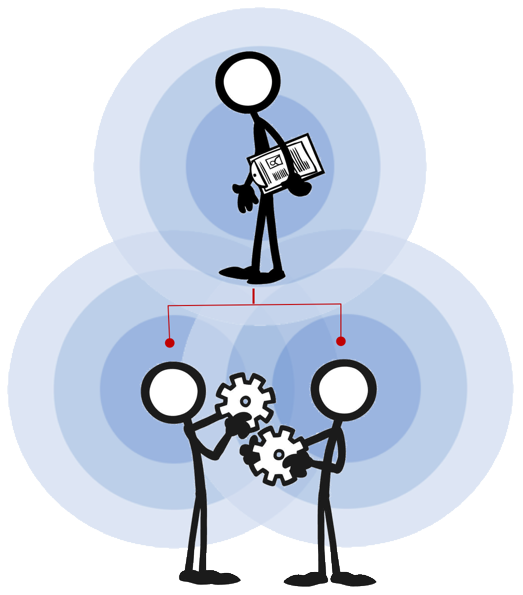The Iceberg of Ignorance was published way back in 1989 by Sidney Yoshida. It contended that front line workers know 100% of the problems, supervisors 74%, middle managers 9%, and executives a measly 4%. Thus, it was popularized that executives were only aware of the “tip of the iceberg” when it came to problems in the organization.
Catchy.
But the metaphor is rather easily debunked. Ignorance actually goes both ways.
However, it’s not very fair to revist the Iceberg of Ignorance and then debunk the Iceberg of Ignorance without offering an alternative point of view. So, let’s consider a more realistic view of what’s going on when it comes to “organizational problems”.
 Knowledge of problems is better viewed as a series of concentric “knowledge circles”. The innermost circle contains all the problems known only to the individual. These problems are usually the kinds of things that cause frustration with performing an individual task or job or even personal problems that are affecting worker performance, but haven’t risen to the next level: problems known to you and other co-workers.
Knowledge of problems is better viewed as a series of concentric “knowledge circles”. The innermost circle contains all the problems known only to the individual. These problems are usually the kinds of things that cause frustration with performing an individual task or job or even personal problems that are affecting worker performance, but haven’t risen to the next level: problems known to you and other co-workers.
This second level contains shared problems. It could be systemic problems that plague others performing the same job or it could be those problems affecting others down stream from problems that occur up stream.
Then there’s a small collection of problems that the individual merely hears about. They’re not really involved nor directly affected by the problems but the problems are being discussed to a level that others are hearing about it. (In my experience, these are the rumor problems that get discussed in casual conversation.)
But there are also problems in every organization about which individuals have no knowledge whatsoever. In fact, in any mid to large organization, this is where most problems actually reside.
With this in mind, it would follow that the flatter the organization and the closer people work together, the more likely the knowledge cicles will overlap and problems can be jointly addressed.
If we then take Sidney Yoshida’s percentages and apply them to this model instead, it is much more likely that ANY individual has only a very small knowledge of the problems of the organization. We all see only a very small “tip of the iceberg”. And though collectively the bottom layer of the organization may know of more problems in total than the much narrower top of the orgainzation, it’s debatable whether or not those problems are more critical than the few problems known at the top.
Let’s not take the iceberg of ignorance as gospel. There are a number of ways to look at problem awareness in an organization. Knowledge circles might actually be more helpful.